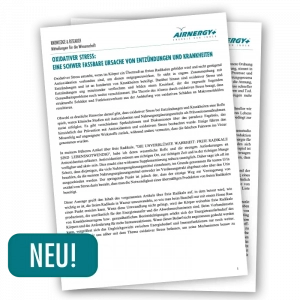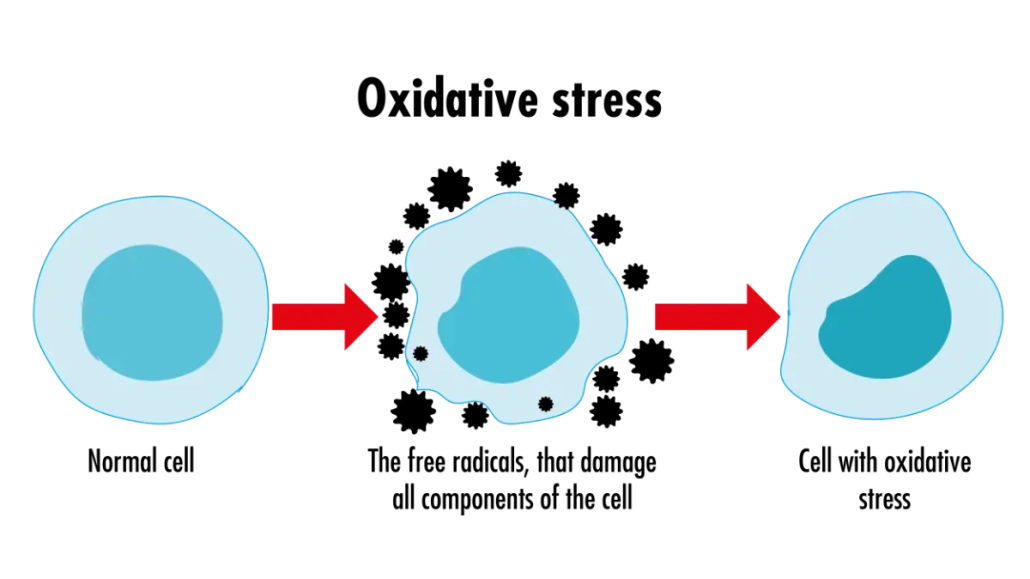2. Vertragsabschluß
Der Besteller bietet mit Übersendung/Übermittlung des unterzeichneten Formulars der Airnergy International GmbH den Abschluss eines Kauf-/Werklieferungsvertrages an. Er ist an seinen Antrag vier Wochen gebunden.
Der Vertrag ist geschlossen, wenn die Airnergy International GmbH die Annahme der Bestellung der näher bezeichneten Kaufgegenstände innerhalb dieser Frist schriftlich bestätigt hat oder die Lieferung ausgeführt ist. Die Airnergy International GmbH ist jedoch verpflichtet, den Besteller unverzüglich zu unterrichten, wenn die Bestellung nicht angenommen wird. Die Angaben zu Waren und Preisen unterliegen u.a. der Anpassung durch technische Veränderungen der angebotenen Produkte.
3. Preise
4. Zahlungsbedingungen
4.1
Die Zahlung erfolgt grundsätzlich per Vorab-Überweisung auf das Konto der Airnergy International GmbH. Auf Wunsch des Bestellers erfolgt eine Lieferung per Nachnahme. Die entstehenden Kosten hat der Besteller zu tragen. Der Airnergy International GmbH steht die Wahl des Lieferunternehmens frei. Die Airnergy International GmbH kann nach eigener Entscheidung auch gegen Rechnung liefern.
4.2
Rechnungen sind sofort ohne Abzug zur Zahlung fällig.
4.3
Zahlungen sind unmittelbar an die Airnergy International GmbH zu leisten. Zur Entgegennahme von Zahlungen sind Mitarbeiter der Airnergy International GmbH nur mit schriftlicher Inkasso-Vollmacht ermächtigt.
4.4
Bei Zahlungsverzug ist die Airnergy International GmbH unbeschadet der Geltendmachung weiteren Verzugsschadens berechtigt, Verzugszinsen in Höhe von 5% über dem jeweiligen Diskontsatz der Deutschen Bundesbank zu verlangen. Der Besteller kann der Airnergy International GmbH nachweisen, dass als Folge des Zahlungsverzuges kein oder ein wesentlich geringerer Schaden entstanden ist.
4.5
Der Besteller ist zur Aufrechnung nur mit unbestrittenen oder rechtskräftig festgestellten Gegenforderungen berechtigt. Ist der Besteller Kaufmann, ist er zur Ausübung eines Zurückbehaltungsrechts nur befugt, soweit die Gegenforderung unbestritten oder rechtskräftig festgestellt ist.
5. Lieferzeit/Verzug
5.1
Die Airnergy International GmbH ist bemüht, die genannten Liefertermine einzuhalten. Angegebene Lieferzeiten sind jedoch stets nur annähernd und unverbindlich. Teillieferungen sind zulässig.
5.2
Die Einhaltung der Lieferverpflichtung der Airnergy International GmbH setzt die rechtzeitige und ordnungsgemäße Erfüllung der Mitwirkungspflicht des Bestellers voraus. Kommt der Besteller in Abnahmeverzug oder verletzt die Mitwirkungspflicht, ist die Airnergy International GmbH berechtigt, den Ersatz des Schadens einschließlich etwaiger Mehraufwendungen zu verlangen. Kommt der Besteller seiner Abnahmeverpflichtung auch nach nochmaliger schriftlicher Aufforderung mit einer Nachfristsetzung von 14 Tagen nicht nach, ist die Airnergy International GmbH berechtigt, vom Vertrag zurückzutreten oder Schadensersatz zu verlangen.
Verlangt die Airnergy International GmbH Schadensersatz, so beträgt dieser pauschal 20% des vereinbarten Kaufpreises. Der Schadensersatz ist höher oder niedriger anzusetzen, wenn die Airnergy International GmbH einen höheren oder der Besteller einen geringeren Schaden nachweist.
6. Versand/Gefahrübergang
6.1
Leistungsort ist, soweit nichts Abweichendes vereinbart wurde, das Auslieferungslager der Airnergy International GmbH in Hennef.
6.2
Versand erfolgt auf Kosten und Gefahr des Bestellers. Eine Versicherung der Ware gegen Transportschäden erfolgt auf Kosten des Bestellers.
6.3
Im Falle einer Beanstandung der Ware hat der Besteller die Kosten für den Rücktransport der Ware an den Leistungsort und den Versand an ihn selbst nach Reparatur/Austausch zu tragen. Diese Regelung gilt nur für gewerbliche Besteller. Sie gilt weiterhin auch für Besteller mit Lieferanschrift außerhalb der Bundesrepublik Deutschland. Der Besteller hat den Transport an den Leistungsort in einem solchen Falle zu veranlassen.
6.4
Beanstandet der Besteller die Ware und es wird festgestellt, dass kein Mangel vorliegt, für den die Airnergy International GmbH aus Sachmängelhaftung oder Garantie einstandspflichtig ist, so trägt der Besteller in jedem Falle die Kosten für den Transport. Eine Rücksendung an den Besteller erfolgt ebenfalls erst nach Kostenerstattung.
7. Sachmängelhaftung/Schadensersatz
7.1
Der Besteller ist verpflichtet, die Ware unverzüglich auf Transportschäden, Falschlieferung und Mängelabweichungen zu untersuchen. Transportschäden sind gegenüber dem Beförderer geltend zu machen. Soweit die Airnergy International GmbH sich zur Übernahme der Transportgefahr bereit erklärt hat, sind Ansprüche des Kunden wegen Transportschäden ausgeschlossen, falls dieser es unterlässt, die Schäden dem Transportunternehmer anzuzeigen und die Airnergy International GmbH sofort zu verständigen.
Offensichtliche Mängel hat der Kunde der Airnergy International GmbH innerhalb von 2 Wochen nach Empfang der Ware schriftlich anzuzeigen. Ist der Kunde Kaufmann, gilt die Regelung der §§ 377, 378 HGB.
7.2
Soweit ein Sachmangel i.S.d. § 434 BGB vorliegt, ist die Airnergy International GmbH berechtigt, nach eigener Entscheidung nachzubessern oder Ersatz zu liefern. Diese Regelung gilt nicht, wenn es sich bei der Bestellung um einen Verbrauchsgüterkauf i.S.d. §§ 474 ff. BGB handelt. Schlägt auch der zweite Versuch der Nachbesserung oder Ersatzlieferung fehl, ist der Besteller berechtigt, vom Vertrag zurückzutreten oder den Kaufpreis zu mindern.
7.3
Gewährleistungsansprüche bestehen insbesondere nicht, wenn
a) der Mangel darauf beruht, dass der Besteller an dem Kaufgegenstand Änderungen oder Erweiterungen vorgenommen oder diesen mit weder von der Airnergy International GmbH genehmigten noch von ihr gelieferten Ersatzteilen versehen hat.
b) der Mangel auf eine unsachgemäße Benutzung, Bedienung, mangelnde Pflege oder Wartung oder auf gewaltsame Einwirkungen zurückzuführen ist.
c) der Mangel auf Verschleiß beruht.
7.4
Zur Nachbesserung bzw. Ersatzlieferung ist die Airnergy International GmbH nur verpflichtet, wenn der Besteller seinerseits das dem Wert der mangelhaften Leistung entsprechende Entgelt gezahlt hat.
7.5
Sachmängelhaftungsansprüche des Bestellers stehen nur diesem zu und sind nicht abtretbar. Weitergehende als die gesetzlichen Ansprüche des Bestellers sind ausgeschlossen.
7.6.1
Der Anspruch des Bestellers auf Schadensersatz wegen einer Pflichtverletzung der Airnergy International GmbH, deren gesetzlicher Vertreter oder Erfüllungsgehilfen, insbesondere für Schäden, die nicht am Liefergegenstand selbst entstanden sind, für entgangenen Gewinn oder sonstige Vermögensschäden ist ausgeschlossen.
7.6.2
Diese Haftungsbegrenzung gilt nicht bei der vorsätzlichen oder fahrlässigen Verletzung einer vertraglichen Hauptpflicht durch die Airnergy International GmbH, deren gesetzliche Vertreter oder Erfüllungsgehilfen. Im Falle einer leicht fahrlässigen Verletzung einer vertraglichen Hauptpflicht haftet die Airnergy International GmbH höchstens bis zum typischerweise vorhersehbaren Schaden, der in der Regel den Kaufpreis der bestellten Ware nicht überschreitet. Die Haftung ist auf Schäden an der bestellten Ware beschränkt.
7.6.3
Die Haftungsbegrenzung gilt in Bezug auf Nebenpflichten ebenfalls nicht im Falle einer vorsätzlichen oder grob fahrlässigen Pflichtverletzung der Airnergy International GmbH, deren gesetzlicher Vertreter oder Erfüllungsgehilfen.
7.6.4
Eine Haftung ist gleichfalls nicht ausgeschlossen, soweit es sich um einen Schaden aus der Verletzung des Lebens, des Körpers oder der Gesundheit handelt.
7.6.5
Die Haftungsbeschränkung gilt ferner dann nicht, wenn der Besteller wegen des Fehlens einer zugesicherten Eigenschaft Schadensersatzansprüche wegen Nichterfüllung gemäß §§ 463, 480 Abs. 2 BGB geltend macht.
7.6.6
Die Regelungen der 7.6.3. und 7.6.4. gelten nicht, so weit des sich bei dem Besteller um einen gewerblichen Kunden handelt.
7.7
Die Verjährungsfrist für Ansprüche aus Sachmängelhaftung beträgt im Falle eines Verbrauchsgüterkaufs nach §§ 474 ff. BGB 2 Jahre, im Übrigen 1 Jahr, gerechnet ab dem Zeitpunkt des Gefahrüberganges. Diese Frist gilt auch für die Ansprüche auf Ersatz von Mängelfolgeschäden, soweit keine Ansprüche aus unerlaubter Handlung geltend gemacht werden.
8. Eigentumsvorbehalt
8.1
Die Airnergy International GmbH behält sich das Eigentum an den gelieferten Waren bis zur vollständigen Zahlung aller der Airnergy International GmbH gegen den Besteller zustehenden und, wenn der Kunde Kaufmann ist, darüber hinaus aus der Geschäftsverbindung mit ihm zustehenden Forderungen, gleich aus welchem Rechtsgrund, vor.
8.2
Bei vertragswidrigem Verhalten des Bestellers, insbesondere bei Zahlungsverzug, ist die Airnergy International GmbH berechtigt, Herausgabe der Verkaufsache zu verlangen. In der Zurücknahme liegt kein Rücktritt vom Vertrag, es sei denn, die Airnergy International GmbH erklärt dies ausdrücklich schriftlich.
8.3
Der Kunde ist berechtigt, die unter Vorbehalt gelieferten Waren im Rahmen seines Geschäftsbetriebs weiter zu veräußern. Die sich aus der Weiterveräußerung der Ware oder einem sonstigen Rechtsgrund ergebenen Ansprüche tritt er im voraus in Höhe der der Airnergy International GmbH gegen ihn zustehenden Forderungen an die Airnergy International GmbH ab.
8.4
Der Besteller ist verpflichtet, die unter Eigentumsvorbehalt gelieferte Ware pfleglich zu behandeln und bis zur Eigentumsübertragung gegen Untergang und Verlust auf seine Kosten zu versichern.
9. Datenschutz
10. Geltendes Recht, Erfüllungsort und Gerichtsstand
Für alle Vertragsbeziehungen gilt deutsches Recht unter Ausschluß des UN-Kaufrechts.
Erfüllungsort für alle Ansprüche aus dem Vertragsverhältnis ist Hennef. Als Gerichtsstand für alle Streitigkeiten wird Siegburg vereinbart, sofern der Besteller Kaufmann ist.
11. Sonstiges
11.1
Nebenabreden und Änderungen dieses Vertrages sind nur rechtswirksam, wenn sie von der Airnergy International GmbH schriftlich bestätigt werden.
11.2
Sollte eine Regelung oder ein Teil einer Regelung dieser Allgemeinen Geschäftsbedingungen oder eines hierauf verweisenden Vertrages unwirksam sein, so berührt dies nicht die Wirksamkeit der übrigen Regelungen. Die Parteien verpflichten sich in einem derartigen Fall, eine neue Vereinbarung zu treffen, die dem wirtschaftlichen Zweck der ungültigen Regelung möglichst nahe kommt und die sie vereinbart hätten, wenn sie deren Unwirksamkeit gekannt hätten.





